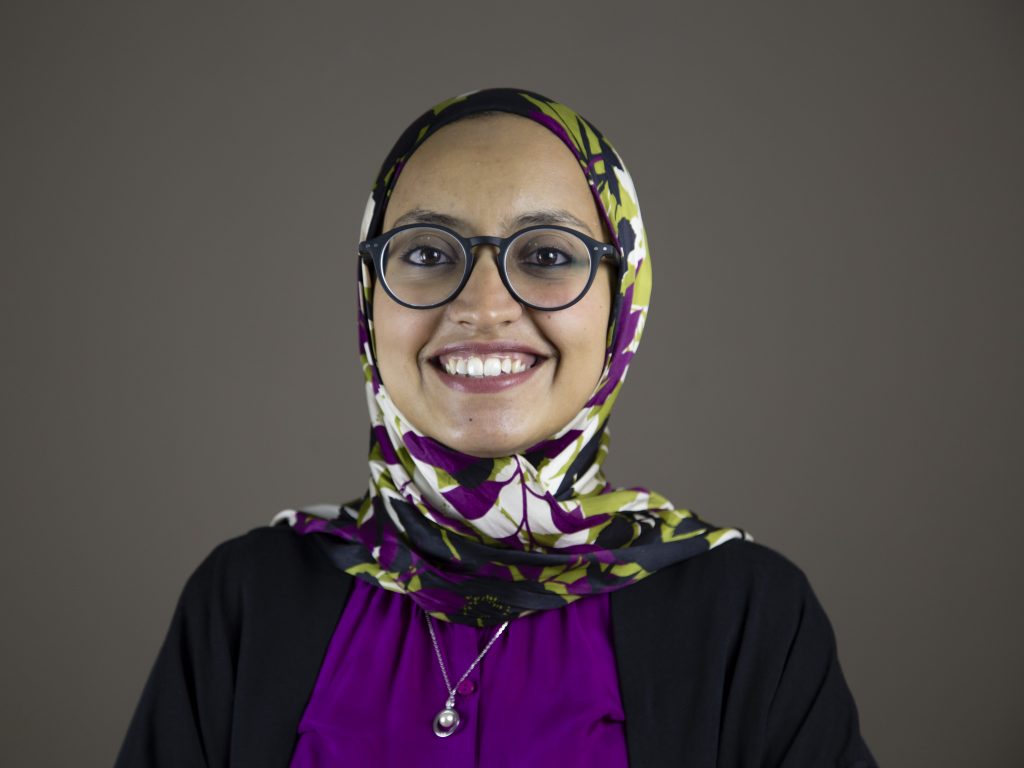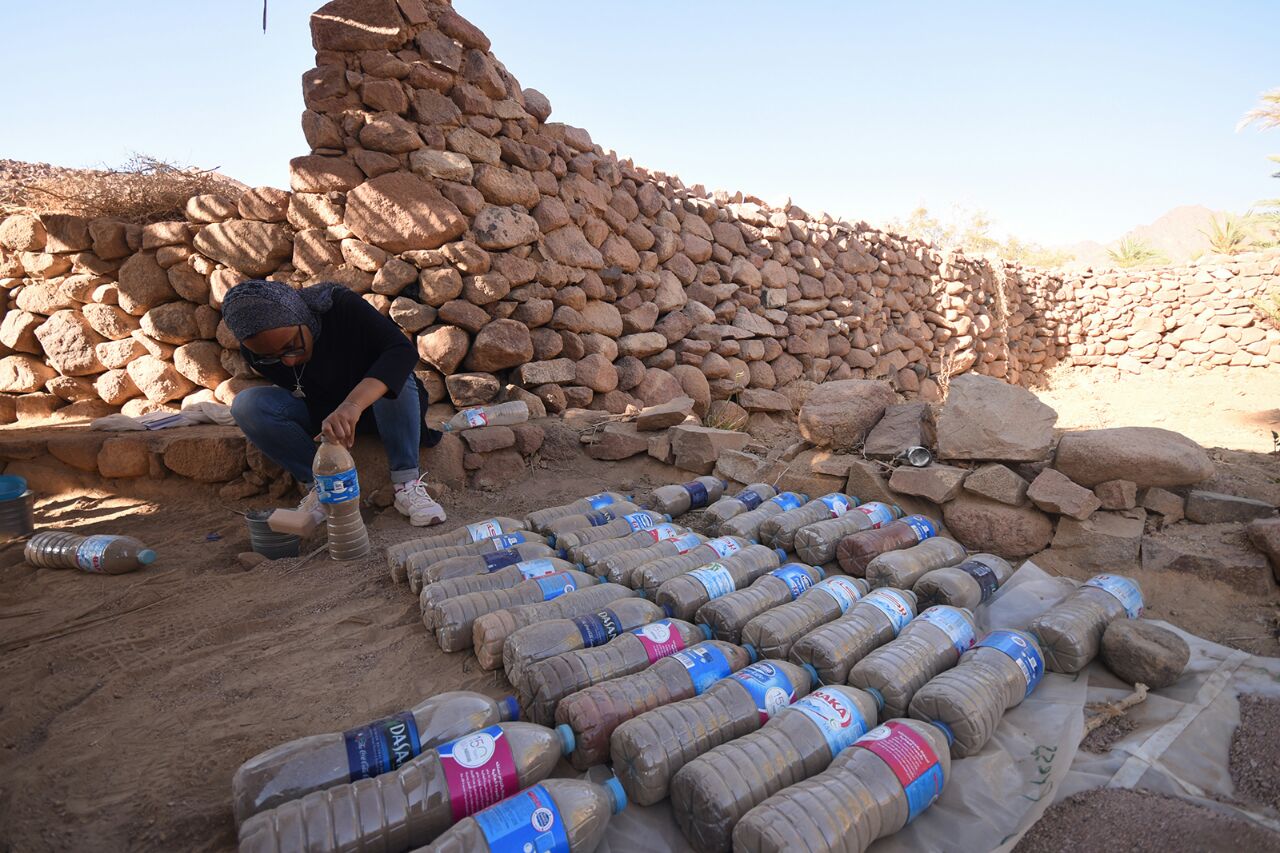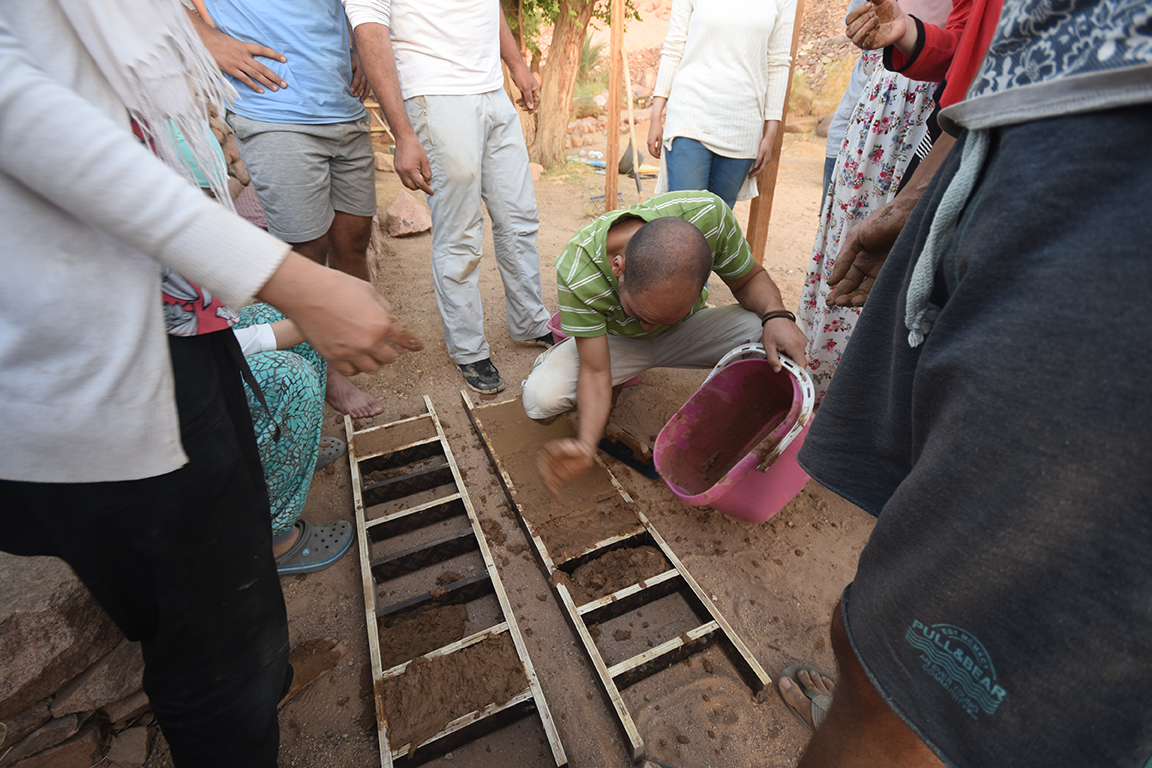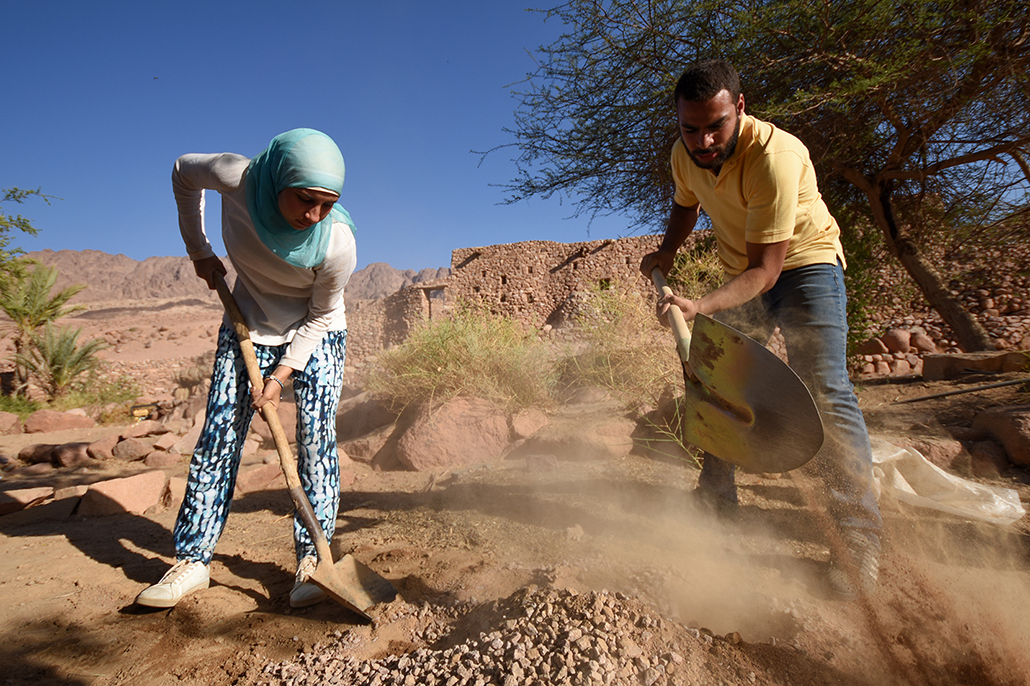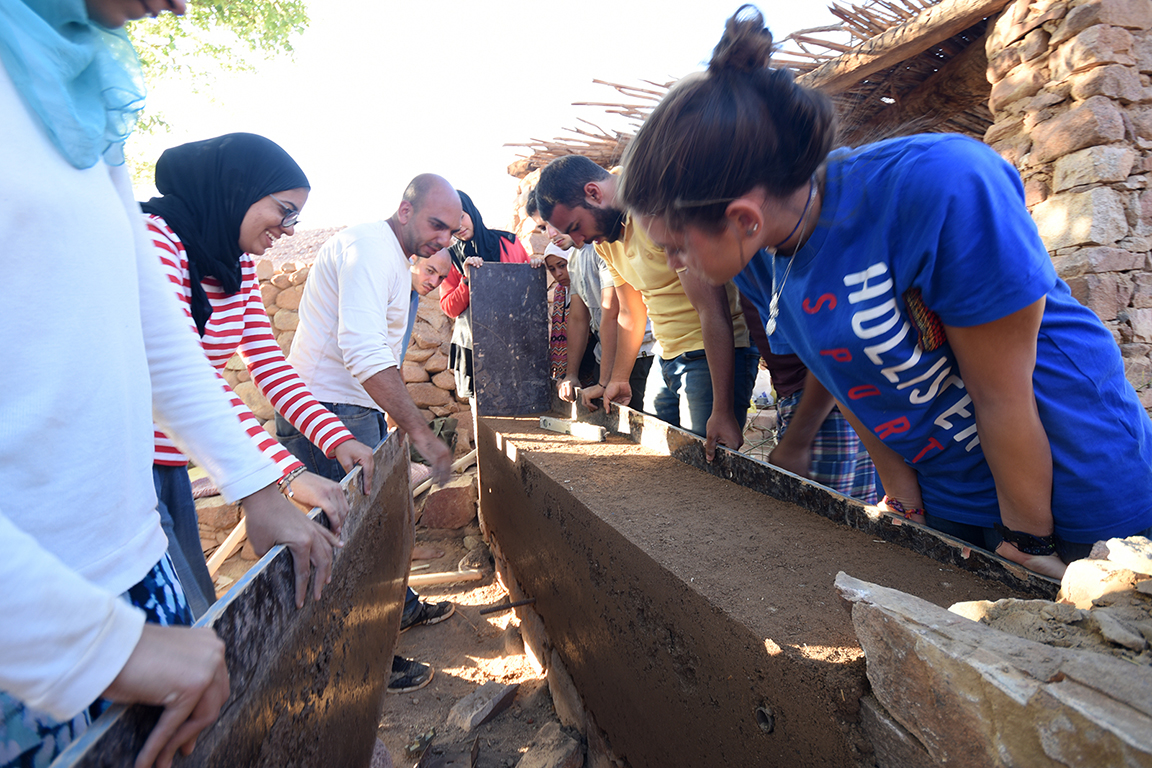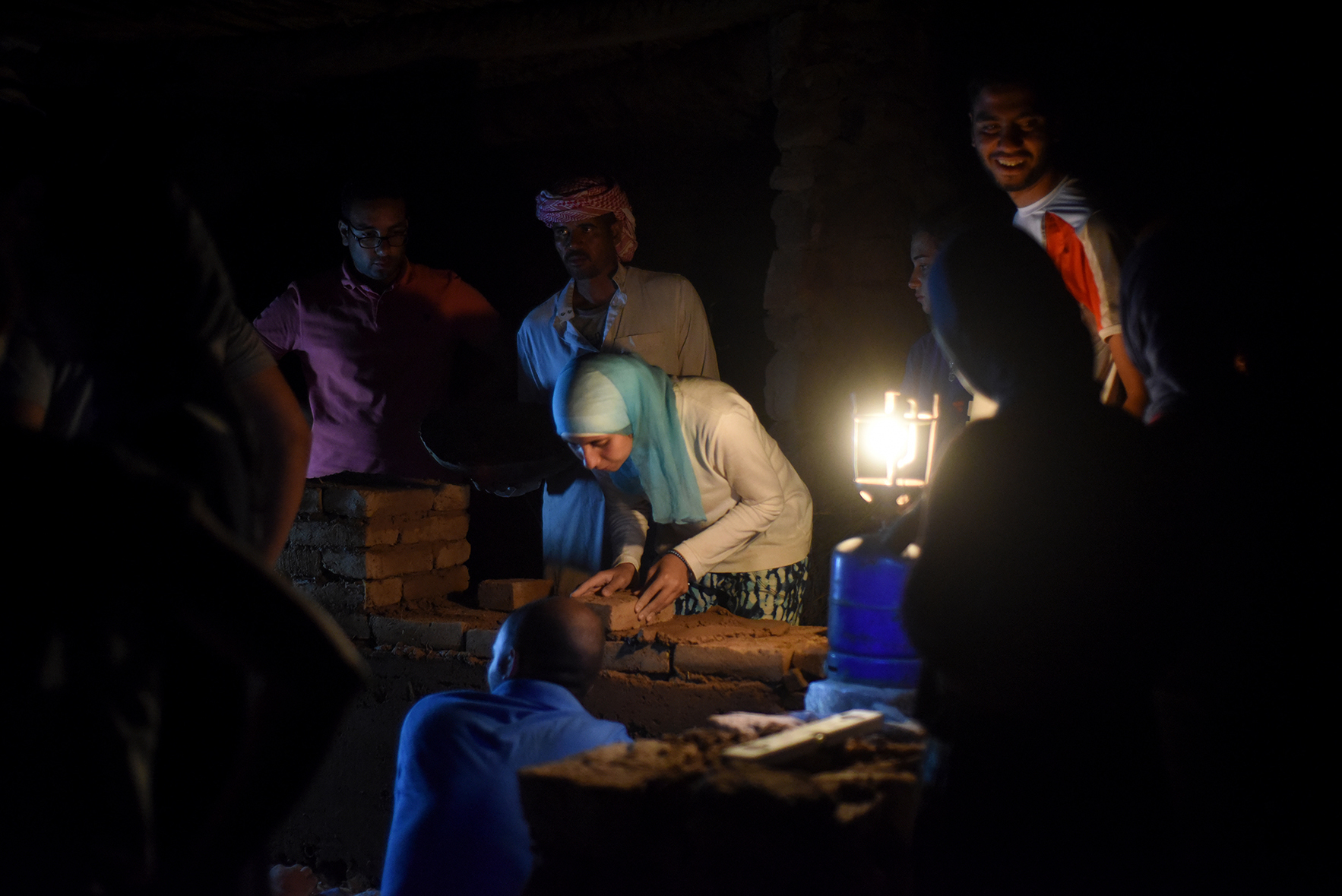You don’t have to be born in a slum to empathize with the struggles for decent housing that poor people face. The engineer Radwa Rostom has always had a place to live. Her father worked for the Ministry of Electricity in Qatar, where she attended the international school. After returning to Cairo to study construction engineering, Rostom got involved in a variety of student activities, among them teaching in informal settlements in Azbit Abu-Qarn, in the suburbs of Cairo. This was when she began to pay attention to slums and temporary settlements. “I felt a responsibility to the underprivileged communities around my city,” she recalls, “and I felt a responsibility to the residents of slum areas and of poor housing units, because I was studying construction and I felt the urge to volunteer and help them.”
At the time, Rostom did not have enough resources to be able to implement a project of her own, but she kept volunteering, and slowly developed more concrete ideas about how she could help make these people’s lives better, in ways that were different from what local NGOs and governments were doing. “It was very frustrating for me the way governments and municipalities deal with this issue. Mostly they adapt the same approach of relocating the people, not involving them in the process, not taking their needs into consideration, so the problem never disappears. I wanted to try a different approach,” she says.
Rostom implemented a low-cost construction process that creates houses with as much structural integrity as those built through traditional methods, and also meet all the necessary codes for residential buildings. The difference is that her approach uses innovation in design, building, financing, and community involvement to reduce the cost of residential construction by 50 percent or more. As well, Rostom’s process uses sustainable construction techniques and local materials, and allows low-income families to design and build their own homes.
Believe.Earth interviewed Radwa Rostom.
- The construction is sustainable, uses local materials, and the process relies on the active participation of the residents (Radwa Roston/Personal Archive)
- The construction is sustainable, uses local materials, and the process relies on the active participation of the residents (Radwa Roston/Personal Archive)
- The construction is sustainable, uses local materials, and the process relies on the active participation of the residents (Radwa Roston/Personal Archive)
- The construction is sustainable, uses local materials, and the process relies on the active participation of the residents (Radwa Roston/Personal Archive)
- The construction is sustainable, uses local materials, and the process relies on the active participation of the residents (Radwa Roston/Personal Archive)
- The construction is sustainable, uses local materials, and the process relies on the active participation of the residents (Radwa Roston/Personal Archive)
Believe.Earth (BE) – At the start of your career, you worked on the construction of malls and other large-scale projects. What led you to change course and focus on popular housing?
Radwa Rostom (RR) – I have always felt the urge to do something for my community and for people who deserve it the most. I wasn’t fully satisfied when I was working for the top-notch clients and there were others whom I felt more of a responsibility to help. The meaning of a house to me was more than a mere building: it was a shelter, the place where productive community members come from and are raised in, and I felt it should be humane and well-enough equipped to guarantee a safe life for its residents.
BE – How did you achieve the model of affordable housing that you have developed?
RR – In the very beginning, the idea was still not mature: it was as simple as “we want people to live in humane and resilient housing units.” I was not yet sure about the “how.” I applied for several fellowship programs and received mentoring and coaching from architects, social entrepreneurs. I had to explore several models to come up with this approach. The idea from the beginning was all about collaboration. I believe the model is still evolving and we are still testing several approaches, and we are quite flexible with it.
BE – Slums exist all over the world. Do you think that the model you created can be applied everywhere?
RR – The main vision we have and that we are striving to realize, is that we want to create a model that is flexible, adaptable and affordable for rehabilitation and upgrading of informal settlements and unprivileged areas, anywhere. We don’t want to stick to a certain building technique that uses heavy equipment; we want to keep it flexible in order to use locally-sourced materials. We want to implement our model in several distinct contexts, taking into consideration the differences between them. We worked in slum areas, we worked in villages, we worked in rural and neglected areas. We understand the culture and mindset of the people, and we stay very flexible so we can grasp and digest their ideas, and tailor our solution accordingly, because our main pillar is something we call a Human-Centered Design Approach.
BE – Not only are they affordable, but the houses also meet all the standards of quality and safety required in your country. How did you manage this?
RR – We are not inventing new methods of construction; the idea of building with earth and local materials has been in our community for a long time, because it is very viable for our climate. It definitely meets the standards of safety and quality and it has proved to be resilient. We only need more education and awareness about such techniques, and we still need support from authorities to include such techniques in the building codes to make the permits and registration more feasible.
BE – Engineering students play an important role in your projects. How does this work?
RR – The students are one of the main pillars of the project. One of our main methodologies in work is spreading knowledge and awareness. Another reason we include students is that they are not otherwise given the opportunity to learn about such building techniques, and if not for our work, they wouldn’t have the opportunity to implement their ideas in a hands-on experience and serve their community at the same time. We include students and recent graduates in all our projects, which they join in a very early stage. We offer a workshop that includes several topics, such as community participation, human-centered design, earth construction, sustainability and environmental design. They learn about this body of knowledge and also get the chance to interact with the locals and learn about their issues.
BE – How do you manage to finance your projects?
RR – For financial sustainability, we separate our work into three categories: The first is community development, which includes housing units, community centers, informal schools, clinics, any building that will contribute to the development of the area. For this track, we depend on donations, awards and grants, and we collaborate with NGOs and local initiatives to sustain the funding of the projects. The second is the commercial track, where we offer consultancy and construction projects for homeowners, as well as development and real estate companies. This is the main revenue-generating stream because these clients can afford to pay, and from the profits we make from this work, we are able to cover the expenses of the rest of our operation. Our third track is education and awareness, where we offer paid workshops and sessions for students and graduates.
BE – What were the main difficulties you faced on this journey?
The main challenge that we face is changing people’s mindsets. People have been convinced that the conventional ways of construction are the best and only way to live in a resilient home or building. Through our work, we are trying to convince people that there are other alternatives that are more affordable, durable, and more comfortable.
BE – In this journey of giving dignity back to people who didn’t have a place to call home, which major achievements would you highlight?
RR – I assume one of our best achievements is that we were able to form a network of people who are eager to learn more and help more communities. Also, this year marks a high point for us, as we have been able to accomplish three projects, and to scale up our team and the scope of our work.
Radwa Rostom is an Ashoka fellow. Ashoka is a worldwide organization present in 84 countries and leads a movement in which any individual can be responsible for positive social transformation.
